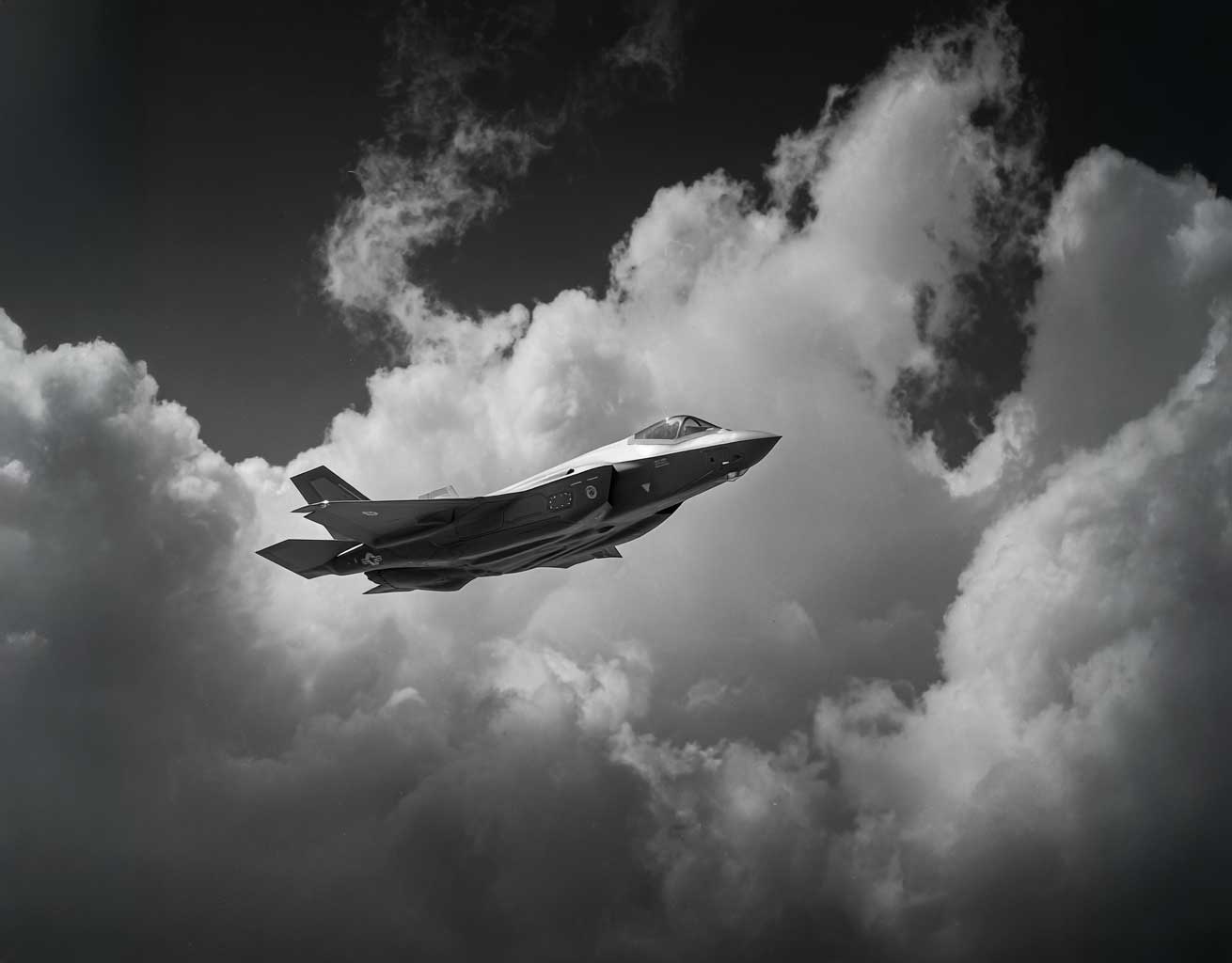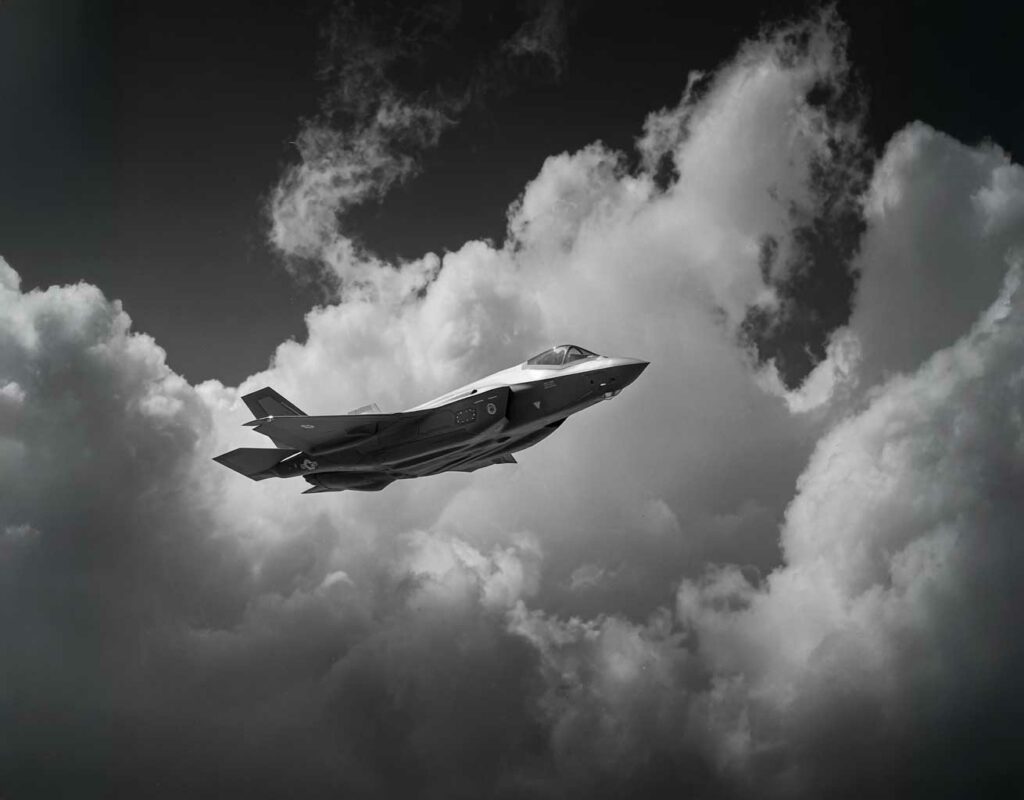
16 Jul UK Acquires Nuclear-Capable F-35A Fighter Jets
The UK orders 12 F-35A fighter jets capable of carrying nuclear warheads, based at RAF Marham. Tanker incompatibility may limit operational range.
The UK’s June 2025 decision to procure at least 12 F-35A fighter jets marks the return of a Royal Air Force airborne nuclear capability for the first time since the 1990s. Stationed at RAF Marham, these jets will be certified to carry US-manufactured B61 nuclear bombs as part of NATO’s dual-capable aircraft mission. The F-35A fighter jet offers longer range and lower operating costs compared to the STOVL F-35B, making it valuable both for nuclear deterrent roles and for pilot training. However, the RAF faces a logistical challenge: its probe-and-drogue tankers, such as Voyager, cannot refuel the F-35A, which requires boom refuelling. Until this is resolved, the jets’ maximum range will rely on allied tanker support.
Strategic significance of the F-35A acquisition
The addition of the F-35A fighter jet gives the RAF a long-distance, conventional take-off platform capable of delivering nuclear ordnance. This reintroduces air-launched nuclear strike capability for the first time since the retirement of WE‑177 bombs in 1998. The nuclear-capable F-35A expands the deterrent architecture beyond submarines and aircraft carriers. It enhances the UK’s contribution to NATO’s nuclear posture by providing strategic flexibility and signaling resolve amid escalating global threats posed by Russia and China.
Technical advantages of the F-35A fighter jet
Compared to the F-35B, the F-35A variant offers several technical benefits:
- Extended unrefuelled range: approximately 1,200 miles versus 900 miles for the F-35B, thanks to greater internal fuel capacity.
- Conventional take-off and landing (CTOL) capability simplifies logistics and training.
- Reduced maintenance burden: absence of STOVL lift-fan systems lowers servicing time and costs.
- Nuclear certification: the only F-35 variant approved to carry the US B61 gravity bomb, enabling integration into NATO nuclear operations.
RAF Marham as base and training hub
RAF Marham has been a centre of F-35 activity since the arrival of F-35B jets in 2018. It hosts the operational conversion unit No. 207 Squadron, which trains both RAF and Royal Navy pilots on the Lightning platform. The F-35A jets will be based at Marham, alongside the B variant, forming a mixed squadron structure. The A variant’s availability and lower maintenance demands will increase pilot hours and accelerate conversion training, allowing the B fleet to focus on operational readiness and carrier deployments.
The nuclear mission and operational readiness
Equipped with B61-12 bombs, the nuclear-capable F-35A will rejoin NATO’s dual-capable aircraft mission. The bombs remain under US control in peacetime and can only be released with approval from NATO and national leadership. Revival of this capability demands extensive infrastructure: hardened weapon storage vaults, security protocols, handling procedures, and regular readiness drills. The complexity of nuclear load operations involves layers of procedural rigor and co-ordination across RAF Regiment, engineers, logistics and command units.
Tanker refuelling dilemma
The F-35A’s reliance on boom-style refuelling poses a significant limitation for RAF operations. Currently, the RAF operates probe-and-drogue tankers, such as the Voyager and older types, which cannot refuel the A variant. This mismatch means that without infrastructural upgrades or new tankers, the F-35A will remain dependent on allied tanker support for extended sorties. The MoD has not yet funded modification of Voyager or procurement of boom-equipped tankers, creating a critical gap in the UK’s sovereign aerial refuelling capacity.
Benefits for trainer conversion and sortie rates
Introducing the F-35A is a pragmatic move to relieve pressure on the STOVL fleet. Used as a training platform, the A variant offers faster pilot throughput: lower maintenance, longer missions, and lower operational costs compared to the B variant. This strategy mirrors international practice, where nations maintain dedicated fleet elements for training and nuclear dual-capable roles. The A jets will serve No. 207 Squadron’s operational conversion unit, enhancing fighter pilot proficiency and readiness more efficiently.
Industrial and policy dimensions
The procurement of F-35As draws on UK industrial contributions—approximately 15 per cent of each jet’s value—leveraging work from over 100 domestic suppliers. The decision also reflects policy adjustments from the Strategic Defence Review, which deferred some F-35B orders in favour of A variants. Future procurement plans will be evaluated under a forthcoming Defence Investment Plan, which may increase the F-35A mix depending on logistics, budget and strategic priorities.
To maximise the strategic value of the F-35A acquisition:
- Invest in boom refuelling capability, either by upgrading existing tankers or procuring dual-mode aircraft.
- Expand nuclear operational infrastructure at RAF Marham, including hardened vaults and dedicated support personnel.
- Keep expanding and balancing the fleet to maintain both carrier capability and nuclear readiness.
- Integrate A variant missions into allied tanker taskings to sustain independence in extended missions.
The 2025 inclusion of nuclear-capable F-35As redefines the RAF’s combat air posture. It bolsters deterrence, streamlines pilot training, and reasserts UK commitment to NATO. But the full potential of these advanced fighters depends on addressing logistical gaps—especially fuelling limitations—and on sustained investment in people and infrastructure. Achieving this will ensure that the fighter jet transition from acquisition to operational power is smooth and strategically credible.

